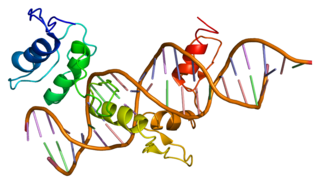| PTCH2 | |||||||||||||||||||||||||||||||||||||||||||||||||||
|---|---|---|---|---|---|---|---|---|---|---|---|---|---|---|---|---|---|---|---|---|---|---|---|---|---|---|---|---|---|---|---|---|---|---|---|---|---|---|---|---|---|---|---|---|---|---|---|---|---|---|---|
| Identifiers | |||||||||||||||||||||||||||||||||||||||||||||||||||
| Aliases | PTCH2 , PTC2, patched 2 | ||||||||||||||||||||||||||||||||||||||||||||||||||
| External IDs | OMIM: 603673; MGI: 1095405; HomoloGene: 37842; GeneCards: PTCH2; OMA:PTCH2 - orthologs | ||||||||||||||||||||||||||||||||||||||||||||||||||
| |||||||||||||||||||||||||||||||||||||||||||||||||||
| |||||||||||||||||||||||||||||||||||||||||||||||||||
| |||||||||||||||||||||||||||||||||||||||||||||||||||
| |||||||||||||||||||||||||||||||||||||||||||||||||||
| Wikidata | |||||||||||||||||||||||||||||||||||||||||||||||||||
| |||||||||||||||||||||||||||||||||||||||||||||||||||
Patched 2 is a protein that in humans is encoded by the PTCH2 gene. [4]
| PTCH2 | |||||||||||||||||||||||||||||||||||||||||||||||||||
|---|---|---|---|---|---|---|---|---|---|---|---|---|---|---|---|---|---|---|---|---|---|---|---|---|---|---|---|---|---|---|---|---|---|---|---|---|---|---|---|---|---|---|---|---|---|---|---|---|---|---|---|
| Identifiers | |||||||||||||||||||||||||||||||||||||||||||||||||||
| Aliases | PTCH2 , PTC2, patched 2 | ||||||||||||||||||||||||||||||||||||||||||||||||||
| External IDs | OMIM: 603673; MGI: 1095405; HomoloGene: 37842; GeneCards: PTCH2; OMA:PTCH2 - orthologs | ||||||||||||||||||||||||||||||||||||||||||||||||||
| |||||||||||||||||||||||||||||||||||||||||||||||||||
| |||||||||||||||||||||||||||||||||||||||||||||||||||
| |||||||||||||||||||||||||||||||||||||||||||||||||||
| |||||||||||||||||||||||||||||||||||||||||||||||||||
| Wikidata | |||||||||||||||||||||||||||||||||||||||||||||||||||
| |||||||||||||||||||||||||||||||||||||||||||||||||||
Patched 2 is a protein that in humans is encoded by the PTCH2 gene. [4]
This gene encodes a transmembrane receptor of the patched gene family. The encoded protein may function as a tumor suppressor in the hedgehog signaling pathway. [4]
Alterations in this gene have been associated with nevoid basal cell carcinoma syndrome, basal cell carcinoma, medulloblastoma, and susceptibility to congenital macrostomia. [4]

Phosphatase and tensin homolog (PTEN) is a phosphatase in humans and is encoded by the PTEN gene. Mutations of this gene are a step in the development of many cancers, specifically glioblastoma, lung cancer, breast cancer, and prostate cancer. Genes corresponding to PTEN (orthologs) have been identified in most mammals for which complete genome data are available.

Zinc finger protein GLI1 also known as glioma-associated oncogene is a protein that in humans is encoded by the GLI1 gene. It was originally isolated from human glioblastoma cells.

Zinc finger protein GLI3 is a protein that in humans is encoded by the GLI3 gene.

Nevoid basal-cell carcinoma syndrome (NBCCS) is a rare inherited medical condition involving defects within multiple body systems such as the skin, nervous system, eyes, endocrine system, and bones. People with NBCCS are prone to developing various cancers, including a common and usually non-life-threatening form of non-melanoma skin cancer called basal-cell carcinomas (BCCs). Only about 10% of people with the condition do not develop BCCs; the vast majority of patients develop numerous BCCs.
The Hedgehog signaling pathway is a signaling pathway that transmits information to embryonic cells required for proper cell differentiation. Different parts of the embryo have different concentrations of hedgehog signaling proteins. The pathway also has roles in the adult. Diseases associated with the malfunction of this pathway include cancer.

Smoothened is a protein that in humans is encoded by the SMO gene. Smoothened is a Class Frizzled G protein-coupled receptor that is a component of the hedgehog signaling pathway and is conserved from flies to humans. It is the molecular target of the natural teratogen cyclopamine. It also is the target of vismodegib, the first hedgehog pathway inhibitor to be approved by the U.S. Food and Drug Administration (FDA).

The Von Hippel–Lindau tumor suppressor also known as pVHL is a protein that, in humans, is encoded by the VHL gene. Mutations of the VHL gene are associated with Von Hippel–Lindau disease, which is characterized by hemangioblastomas of the brain, spinal cord and retina. It is also associated with kidney and pancreatic lesions.

Tumor protein p63, typically referred to as p63, also known as transformation-related protein 63 is a protein that in humans is encoded by the TP63 gene.

Protein patched homolog 1 is a protein that is the member of the patched family and in humans is encoded by the PTCH1 gene.

Neuronal acetylcholine receptor subunit alpha-1, also known as nAChRα1, is a protein that in humans is encoded by the CHRNA1 gene. The protein encoded by this gene is a subunit of certain nicotinic acetylcholine receptors (nAchR).

T-box transcription factor TBX3 is a protein that in humans is encoded by the TBX3 gene.

RNA-binding protein 5 is a protein that in humans is encoded by the RBM5 gene.

Suppressor of fused homolog is a protein that in humans is encoded by the SUFU gene. In molecular biology, the protein domain suppressor of fused protein (Sufu) has an important role in the cell. The Sufu is important in negatively regulating an important signalling pathway in the cell, the Hedgehog signalling pathway (HH). This particular pathway is crucial in embryonic development. There are several homologues of Sufu, found in a wide variety of organisms.

Histone-lysine N-methyltransferase 2D (KMT2D), also known as MLL4 and sometimes MLL2 in humans and Mll4 in mice, is a major mammalian histone H3 lysine 4 (H3K4) mono-methyltransferase. It is part of a family of six Set1-like H3K4 methyltransferases that also contains KMT2A, KMT2B, KMT2C, KMT2F, and KMT2G.

Twist-related protein 2 is a protein that in humans is encoded by the TWIST2 gene. The protein encoded by this gene is a basic helix-loop-helix (bHLH) transcription factor and shares similarity with another bHLH transcription factor, TWIST1. bHLH transcription factors have been implicated in cell lineage determination and differentiation. It is thought that during osteoblast development, this protein may inhibit osteoblast maturation and maintain cells in a preosteoblast phenotype.

Leucine-zipper-like transcriptional regulator 1 is a protein that in humans is encoded by the LZTR1 gene.

Macrostomia refers to a mouth that is unusually wide. The term is from the Greek prefix makro- meaning "large" and from Greek στόμα, "mouth".

Matthew P. Scott is an American biologist who was the tenth president of the Carnegie Institution for Science. While at Stanford University, Scott studied how embryonic and later development is governed by proteins that control gene activity and cell signaling processes. He co- discovered homeobox genes in Drosophila melanogaster working with Amy J. Weiner at Indiana University.
Patched Domain-Containing Protein 4 (PTCHD4) is a protein, which in humans is encoded by the Patched Domain-Containing Protein 4 gene. It is otherwise known by the aliases: PTCHD4, C6orf138, dj402H5.2, and by the accession number BC137364.

DExH-box helicase 34 is a protein that in humans is encoded by the DHX34 gene.
This article incorporates text from the United States National Library of Medicine, which is in the public domain.